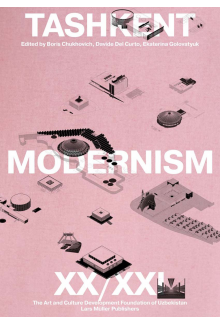- Titulinis
- Meno ir laisvalaikio literatūra
- Architektūra, dizainas
- Tashkent Modernism XX/XXI
Tashkent Modernism XX/XXI
Balsavo 0
ISBN: 9783037787519
Leidimo metai: 2025
Puslapių skaičius: 928
Formatas: Minkšti viršeliai
Formatas: 24.1×16.5
Leidimo metai: 2025
Puslapių skaičius: 928
Formatas: Minkšti viršeliai
Formatas: 24.1×16.5
Kaina:
Šių parametrų produkto neturime
Likutis pakankamas
Iš leidyklos gausime per 3-5 savaitės. Galimas vėlavimas
Turime sandėlyje. Pristatymas Lietuvoje 1-4 d.d.
Iš leidyklos gausime per 3-5 savaitės. Galimas vėlavimas
Pristatymo sąlygos
Aprašymas
An investigative record of the architectural movement emblematic of the Soviet Orient.After World War II, Tashkent, Uzbekistan, was designated as the capital of the Soviet Orient, a vitrine of socialism in the East. Conceived by both local and Moscow architects, the distinctive quality of Tashkent modernism (1964-1991) emerges from the tension between the Soviet Union's ambition for the city and the locals' endeavor to retain their city's character.This volume is an outgrowth of the Tashkent Modernism XX/XXI project, a research and preservation effort organized around a conference and exhibition held in 2023. The conference's title, "Where in the World Is Tashkent", was drawn from the 2000 American Institute of Architects conference "Where in the World Is Chicago", and its organizers shared a similar aim in re-situating the city of Tashkent as a paradigm for modernist architecture.The book consists of two interwoven layers. The first section contains a series of written and visual essays, while the second includes 15 building monographs, detailing their histories, protection inventories and intervention strategies. Case studies include the Cosmonauts metro station and the Tashkent outpost of the Vladimir Lenin museum. Altogether, the volume explores key themes related to the architectural, social and cultural history of Tashkent and its current condition. More than just another "peripheral case" of multiple modernities or a white spot on the world map of architectural modernism of the 20th century, this architecture – being relevant to the global cultural scene – reflects the colonial, postcolonial and, at the same time, decolonial aspects of the Soviet social and cultural experiment.
Atsiliepimai (0)
Palikite atsiliepimą

